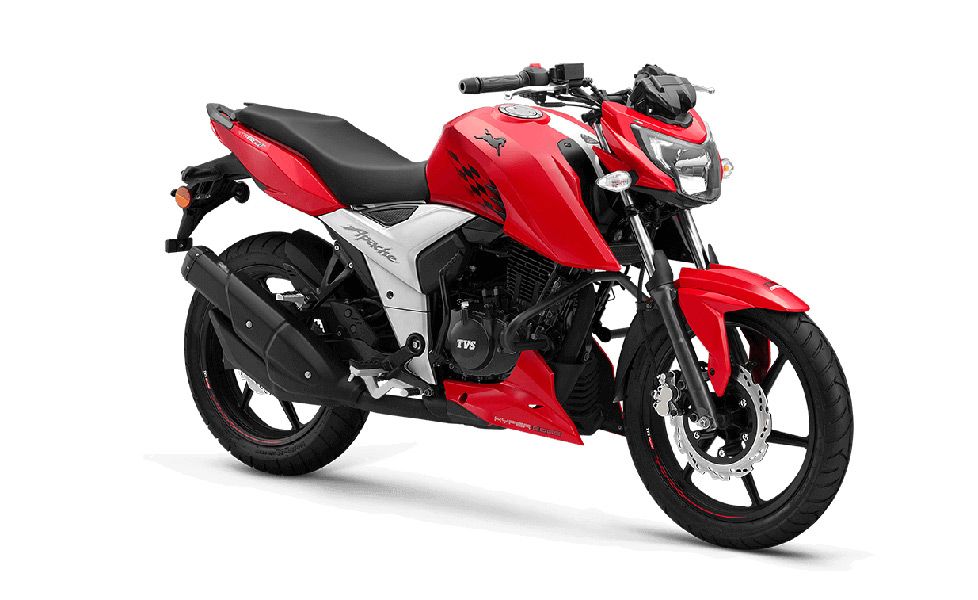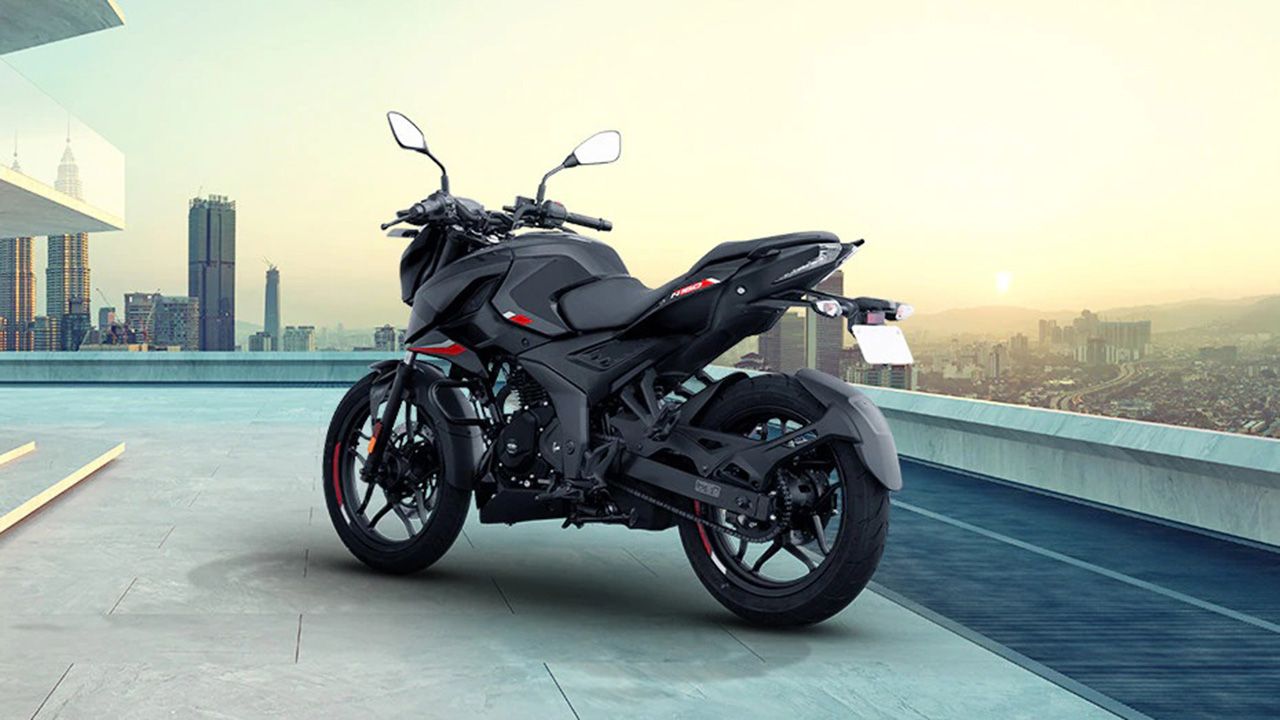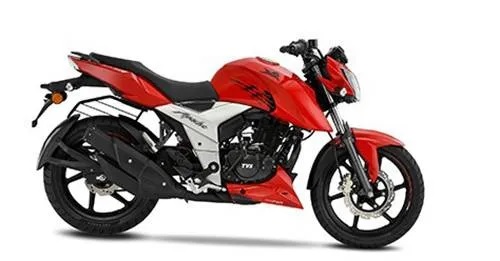For starters, let’s talk about the TVS Apache RTR 160 4V. The ‘4V’ stands for the fourth version. The non-4V is the entry-level offering in the Apache series, followed by the 160 4V offering. The starting price of the RTR 160 is Rs 1.19 lakh, while the 160 4V’s price starts from Rs 1.24 lakh. All are ex-showroom figures. This bike, however, is among the bestselling TVS bikes in the segment and the country.
On the flip side, the Bajaj Pulsar N160 has a starting price of Rs 1.23 lakh, ex-showroom. It is positioned between the Pulsar P150 and the Pulsar NS160.
Like their similar price figures, these bikes are also similar in terms of features and specifications, making them direct rivals to each other.
So, let’s begin to weigh these two bikes and see how they stack up against each other.
Specifications
Before jumping straight to the figures, let’s talk about the underpinnings of these two homegrown 160cc bikes. As for the TVS Apache RTR 160 4V, the two-wheeler manufacturer structured this bike on a double cradle split synchro Stiff chassis, which is technically track-focused. In parallel, the Bajaj Pulsar N160 is built on a widely-used tubular frame, which is also robust and good for city riding. For that matter, several Bajaj bikes are built using that type of frame.

As far as the figures are concerned, the TVS Apache RTR 160 4V is powered by a 159.7cc, single-cylinder, oil-cooled engine, which is tuned to churn out 17.31 bhp at 9250 rpm and 14.73 Nm of peak torque at 7250 rpm. It is mated to a standard five-speed manual transmission.
On the other hand, the Bajaj Pulsar N160 draws power from a 164.82cc, single-cylinder, oil-cooled engine, which is tune to churn out 15.68 bhp at 8750 rpm and 14.65 Nm of peak torque at 6750 rpm. Like its TVS counterpart, this bike is also mated to a five-speed manual transmission.
Engine
Weighing the figures of these two bikes, the TVS offering is more powerful than the Bajaj NS160. Head to the autoX website to check the location-based Apache 160 4V price.
Given these figures, the top speed of the Apache RTR 160 4V is 114 km/h, while the top speed of the Pulsar N160 is 120 km/h.
Apart from that, the Apache RTR 160 4V has a fuel tank capacity of 12 litres, making it 2 litres smaller than the Pulsar N160’s 14 litres tank.
As far as fuel efficiency is concerned, the TVS offering has an ARAI-certified mileage of 41.4 km/l, while the Pulsar N160 has an ARAI-certified mileage of 51.6 km/l. However, the real-world mileage figure of these two bikes is the same, which is rateing at 46 km/l. Please note that the actual mileage can vary with various factors, such as individuals’ riding styles, local traffic conditions, and engine and transmission combinations.
Suspension
Keeping their engine performances aside, let’s now talk about the suspension setups of these two offerings. The TVS Apache RTR 160 4V stands on a telescopic fork at the front and a monoshock suspension at the rear. On the flip side, the Bajaj Pulsar N160 is also equipping with a telescopic fork at the front and a monoshock at the rear but with Bajaj’s Nitrox Canister. Considering the N160’s price, which is marginally on the lower side has a better suspension setup.

Moreover, these indigenous bikes are engineering by keeping the conditions of Indian roads in mind, making them able to absorb the undulations and bumps from potholes with ease. Comparatively, the Pulsar N160 might offer better rideability because of its superior rear suspension. For your reference, Bajaj’s Nitrox suspension incorporates a canister, which consists of Nitrogen for better riding dynamics.
Besides that, the Apache RTR 160 4V has a single-channel ABS as standard, while the Bajaj Pulsar N160 has an optional dual-channel ABS. A bike with dual-channel will offer better stability on difficult road conditions as well as around the corners.
Check out the Pulsar N160 price here.
As far as braking duties are concerned, the Apache RTR 160 4V and the Bajaj Pulsar N160 have dual disc brakes. Disc brake(s) is standard across the variants.
The Pulsar N160 has bigger disc brakes than the Apache RTR 160 4V. The former has disc brake sizes of 300mm and 230mm at the front and rear, respectively. In parallel, its TVS counterpart has disc brake sizes of 270mm and 200mm at the front and rear, respectively.
Features
The exclusive features of the Apache RTR 160 4V include a digital tachometer, mobile app connectivity, GPS and navigation, adjustable clutch, 3 ride modes, GTT (Gilde Through Technology), and TVS SmartXConnect.
The common offerings of these two bikes include a digital instrument cluster, digital fuel gauge, low fuel indicator, low oil indicator, low battery indicator, and clock. Other shared features are an electric start, killswitch, and a pillion seat with footrests and grabrails.
Prices and Variants
The Apache RTR 160 4V is sell in four variants. It has a starting price of Rs 1.23 lakh for the base variant, the Single Disc-ABS, and goes up to Rs 1.32 lakh for the Special Edition version. On the other hand, the Pulsar N160 can be chosen from two of its variants. The Baja Pulsar N160 price starts at Rs 1.22 lakh, and it goes up to Rs 1.30 lakh for the dual-channel ABS.
All are ex-showroom prices in Delhi, as of August 2023. Please note that these prices are subject to change without any prior notice to the customer. You can, however, visit the autoX website to access the latest location-based price list for your dream vehicle. For more, visit our website or connect with us on Facebook, Twitter, LinkedIn, Instagram, and YouTube. So, stay tuned!

